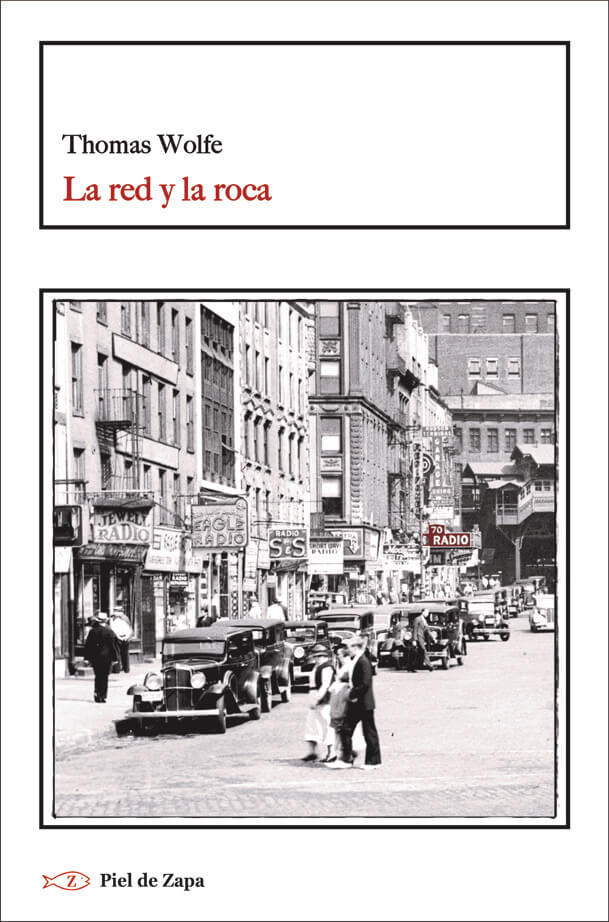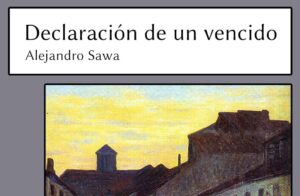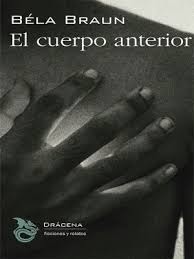
This is the author’s posthumous work, since Thomas Wolfe died in 1938, leaving an enormous legacy that had not yet been published. In fact, The network and the rock It was the first of the two works that its editor, Edward Aswell, offered to the public based on the torrentially inspired manuscript that Wolfe had given him in May, the same year of his death. After The web and the rocknow finally translated into our language, would come You can’t go home again (1940), both published after his death.
A mature portrait of US society
In The network and the rock Wolfe introduces a protagonist, George “Mico” Webber, a new, more mature alter ego of the author, and abandons the previous protagonist of some of his works, Eugene Gant. The work revives Webber’s life experience and follows him, from provincial life subject to family ties (the network) to New York City, dreamed of as a place of promise for a writing career (the rock). This experience will be followed, in the narrated life course, by the trip to a Europe convulsed by Hitler’s rise to power.
With a detailed narrative that balances between humanism and existentialism, Wolfe delves into the details of southern customs, to relate his life in a bittersweet tone, supported by the experience accumulated in the last years of his life and showing a mastery of masterful grammar. As Wolfe himself certifies in the prologue: «It is the most objective novel I have written. I have invented characters based on the amalgamation and consonance resulting from seeing, feeling, thinking, living and knowing other people. Through free creation, I have tried to release my power of invention.
American southern lyricism
After the premature death of Thomas Wolfe, William Faulkner called him the best writer of his generation, placing Faulkner himself, modestly, in second place on the list. Wolfe is, along with Faulkner and Carson McCullers, a genuine representative of what could be called American Southern lyricism.
However, today a major work by an author like Wolfe, whose influence can be traced to writers such as Ray Bradbury, Philip Roth or Jack Kerouac, is now available to the public in its Spanish translation – thanks to the Piel de Zapa publishing house. In the words of Leo Gurko, who wrote the author’s biography in Thomas Wolfe: Beyond the Romantic Ego: «Read, as it should be, as an intensely articulated mural, first of the provincial landscape and then, climatically, of the urban one, The network and rock not only does not suffer in comparison with its famous predecessor Of time and the river (1935) but is not comparable with anything else. As a whole, based on his own life experience, this novel is – along with its predecessor, also edited by Piel de Zapa – one of the most important pieces that has had the greatest influence on the contemporary novel.
About the Author
Thomas Clayton Wolfe (1900-1938) He was born in Asheville, North Carolina, the youngest of eight children. His father was a marble mason specializing in tombstones. His mother entered the field of real estate investment with little success. Wolfe studied at the University of North Carolina at Chapel Hill. In the fall of 1919 he enrolled in a drama course and from there he wrote several plays, some of which were performed. In September 1920 he entered the Graduate School of Arts and Sciences at Harvard University, where he also studied playwriting. His first important work, The angel who watches us, was published in 1929 and made a profound impression on American and British literary circles. In 1938 his great novel was published Of time and the river, a magnum opus that definitively established her as one of the most important novelists of the 20th century in the United States. After her death, the novels were published The network and the rock in 1939 y You can’t go back home In 1940.
About the Piel de Zapa publishing house
To name this seal, the publisher has taken Balzac’s famous story as a reference. One of the most famous in literary history. The central theme establishes the conflict between desire and longevity, between an intense but brief life or a long existence. Zapa’s magical skin in the story is exhausted with every desire, but the team of this publishing house is convinced that it is worth putting all our energy into this bet, which is none other than quality literature. Intense, very intense, and they hope it will also last a long time.
The publishing label, founded in 2012, has in its catalog national and international authors of modern and contemporary literature such as Virginia Woolf, Paul Valéry, Roberto Arlt and Alfons Cervera.
Source: https://algunoslibrosbuenos.com/la-red-y-la-roca-de-thomas-wolfe


